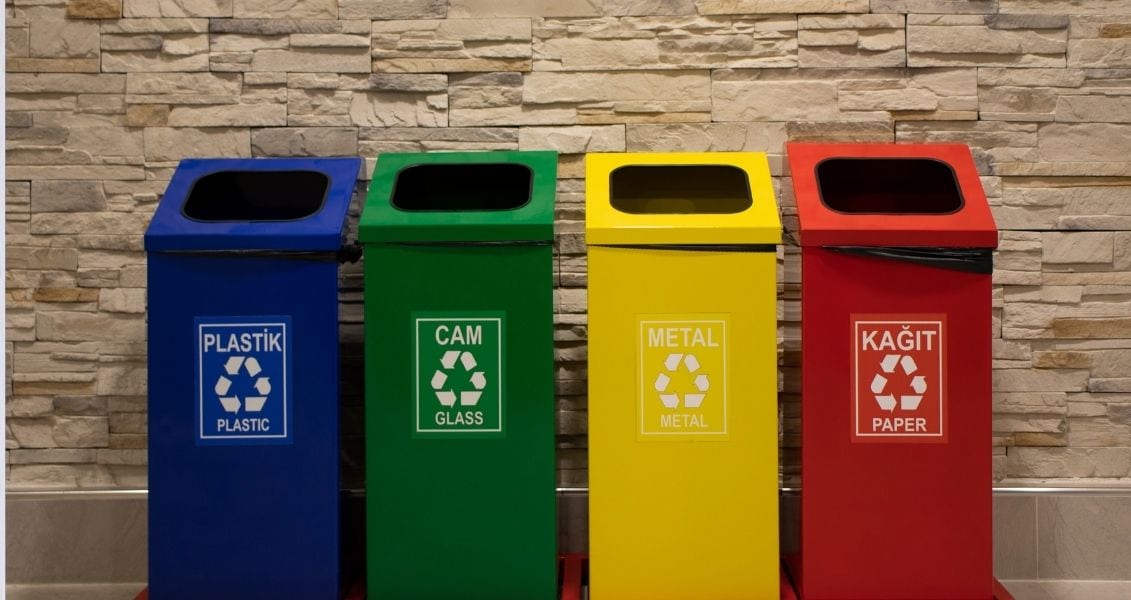World Recycling Day
What day is it?
Every year, the Earth gives humanity billions of tons of natural resources, but in the near future they may run out. Therefore, we should think about what we throw in the trash. Various packaging, used paper, plastic, glass and other materials — if all of these are recycled, you can save a large part of natural resources for future generations. To emphasize the importance of this problem, to develop common international recycling standards, to ensure the future of our planet, the Bureau of International Recycling founded World Recycling Daywhich is celebrated annually on March 18.
How did the idea to celebrate World Recycling Day come about?
It may seem that the problem of waste processing appeared before humanity no later than the last century. In reality, this is not the case, and examples of this can be found in the earliest history. For example, already in 500 BC in Greek Athens, garbage was not thrown away spontaneously, but had to be taken to special landfills located at a distance of at least one and a half kilometers outside the city.
Analysis of the composition of ancient Roman glassware showed that a large part of it was made from remelted fragments. However, the reason for this was not concern for the environment, but a banal lack of raw materials for new products. And in general, most of the waste among the Romans was processed – wooden garbage was a source of heat, it was burned in furnaces; bone meal was made from animal bones; scavengers walked the streets, buying metals and broken glass for remelting. But there was plenty of clay for ceramics, so the fragments of ceramic dishes were not processed so often. However, sometimes they were ground into powder, which was used as part of bricks for construction.
Over time, the manufacturing processes of various goods became simpler, and the industrial revolution contributed to the fact that they became more accessible and cheaper. More and more often, things began to end up in landfills, but there were people who understood that a good profit could be made from waste.
The first processing plants: the USA and Europe
The first paper mill in the United States, owned by William Rittenhausen, a native of Germany, opened in Philadelphia in 1690. The factory produced paper from cotton and linen rags. The American War of Independence led to the first case of metal recycling – in New York in 1776, a monument to King George III was demolished and remelted into 42,000 bullets.
In 1813, Benjamin Lowe organized the production of woolen yarn from old woolen clothes in Great Britain. By 1860, the enterprise produced more than 7,000 tons of recycled yarn. In 1865, the British preacher William Booth organized the poor of London into teams that collected discarded items from the streets and delivered them to a suitable place, where they were sorted and sent for recycling.
In New York, in 1897, the first recycling company was established. This made it possible to sort waste into different categories so that materials such as metal, cloth or paper could be reused. Since 1886, mass production of aluminum cans began in the USA – this quickly led to the appearance of factories for their processing. The first such factory opened in Chicago in 1904.
The times of the Soviet Union
In the Soviet Union, since the 1920s, waste collection was introduced: glass, waste paper, textiles, tires, and polymer materials. The processing sector of the economy was gradually formed, for which the State Post Office was responsible, and since 1971 – the Main Administration for the Collection and Use of Secondary Raw Materials. The entire population was involved in waste collection, especially schoolchildren, for whom the collection of scrap metal or waste paper turned into a competition. For adults, the motivation was the opportunity to purchase scarce books instead of waste paper. Glass bottles were handed over for a small fee, and there were almost no plastic bags then. In 1987, about 70% of secondary materials were processed in the country. Unfortunately, this trend has not been preserved, and most post-Soviet countries cannot boast of a developed processing industry.
Blue box
On the other hand, economically developed countries constantly improved the processing industry. Nova household waste collection and processing system — Blue box appeared in Canada in 1983. The principle is that people put paper waste, glass, metal, aluminum and most of the plastic in one garbage can. This system is still successfully used in many countries.
In Switzerland, in 1991, for the first time, they engaged in the processing of electronics. They started with old refrigerators, and later the technology covered all electronic products. In 2003, the European Union adopted the Directive on waste electrical and electronic equipment. The American computer company Dell in 2006 became the first to provide free recycling of its products. Apple and Sony have implemented the same.
So one can hope that creation the latest technologies for the processing of secondary raw materials and the support of this industry by all states will contribute to the preservation of resources necessary for the existence of humanity.
Statistics
- In the last 50 years, mankind has used more natural resources than in all previous history.
- Recycling one plastic bottle saves energy, which is enough for 4 hours of operation of a 100-watt light bulb. The process of processing a bottle pollutes the air by 20% and water by 50% less than its production from primary raw materials.
- Recycling plastic requires 2 times less energy than burning it.
- More than 1.6 million people in the world are employed in the field of processing of secondary raw materials.
- The annual contribution of the recycling industry to the world GDP for the next 10 years is predicted to be 400 billion dollars.
- Recycling of secondary raw materials reduces carbon dioxide emissions by 700 million tons every year.
World Recycling Day in history
-
1948The Bureau of International Processing was created to support the interests of the processing industry on an international scale. Currently, this organization is represented in 72 countries.
-
1970In the USA, student Harry Anderson won the competition for the best recycling logo. Its logo was created based on the Möbius loop and looked like a triangle with three arrows. Since then, this sign is present on all products subject to secondary processing.
-
1991The Container Recycling Institute, a non-profit organization, was established in the USA, the goal of which is to make the country a global model for the collection and high-quality processing of packaging materials.
-
2000International environmental organizations have proven the link between global warming and waste, and that recycling reduces greenhouse gas emissions.
-
2018On the occasion of its 70th anniversary, the Bureau of International Recycling announced the first World Recycling Day on March 18.
-
2018According to the Ukrainian law “On waste”, from January 1 this year, all waste in the country should be sorted by material, in addition, it should be divided into those that go for processing, those that are subject to burial and those that are dangerous.
Frequent Questions and answers on World Recycling Day
We should value air, water, natural gas, coal, oil and minerals the most. All human livelihoods depend on these six resources. Emphasizing the value of recycled materials, they began to be called the seventh resource.
No, it’s not, because waste is rarely purely plastic or paper. For example, juice packaging consists of cardboard, foil and plastic. The modern processing industry allows you to separate objects into their constituent parts, and manufacturers, in turn, try to make products as recyclable as possible.
Glass and metals can be recycled as much as you want. Paper is recycled up to seven times; plastic after repeated processing is mixed with other materials, for example, added to the mixture for asphalt coating.
Such a country is Sweden, which managed to achieve 99% recycling of secondary raw materials. The country even imports waste from other countries to process it to provide energy — heating and electricity. Austria, Germany and Switzerland recycle 97% of waste.
Among such materials are paper or cardboard contaminated with fat; polypropylene caps from plastic bottles; ceramic heat-resistant dishes; disposable polypropylene dishes; medical waste; window glass and mirrors.
How to celebrate World Recycling Day?
To take part in the useful business of waste recycling, you need to start with your own home.
- The first thing that ends up in the garbage can of every family every day is food waste. These, as well as other organic waste, such as cut branches or grass clippings, are best placed in the compost pile. In this way, complete organic fertilizers for the vegetable garden, garden or flower garden are formed.
- You can also give life to household waste by engaging in applied creativity. For example, you can make a mosaic panel from the fragments of broken cups, plates or ceramic tiles, and a patchwork blanket from old textiles.
- At home, you should give up disposable dishes
- It is better not to throw away unnecessary clothes, but to give them to charitable organizations.
- It will be useful not to buy plastic bags, but to put your purchases in a reusable cloth bag.
- If possible, preference should be given to drinks in glass and metal containers, and in general to products or packaging that can be recycled.
- It will not be superfluous to find out where the local collection points for waste paper, batteries, and plastic are located.
- You can join programs or actions aimed at sorting garbage or installing special containers in the city.
Why is this event important?
This day popularizes the extraordinary role of recycling around the world, raises awareness of the benefits it provides, and encourages governments and business organizations to develop the recycling industry. Secondary processing reduces the amount of waste in landfills and incineration plants, conserves natural resources, saves energy, and creates new jobs.
There is a problem in Ukraine processing of secondary raw materials cannot be called resolved. The absence of waste processing enterprises and the corresponding legislation leads to the fact that landfills, legal and spontaneous, have already taken over a significant territory of the country, and only a tiny fraction of waste is sent for processing. Only a few activists and concerned citizens take care of waste sorting in our country, so a lot of plastic ends up in the garbage, which, when burned, emits poisonous compounds into the air. Unlike European countries, Ukrainian laws do not oblige manufacturers to ensure the possibility of secondary processing of products.
Ago World Recycling Day is a very important reason for Ukraine to finally start taking care of our natural resources, build processing plants and attract investments in the processing industry. And if industrial recycling depends mainly on state policy, then throwing away plastic in separate containers or abandoning the use of plastic bags is completely within the power of every person.
When will we celebrate World Recycle Day?
| Year | Date | Weekday |
|---|---|---|
| 2021 | March 18 | Thursday |
| 2022 | March 18 | Friday |
| 2023 | March 18 | Saturday |
| 2024 | March 18 | Monday |
| 2025 | March 18 | Tuesday |



































